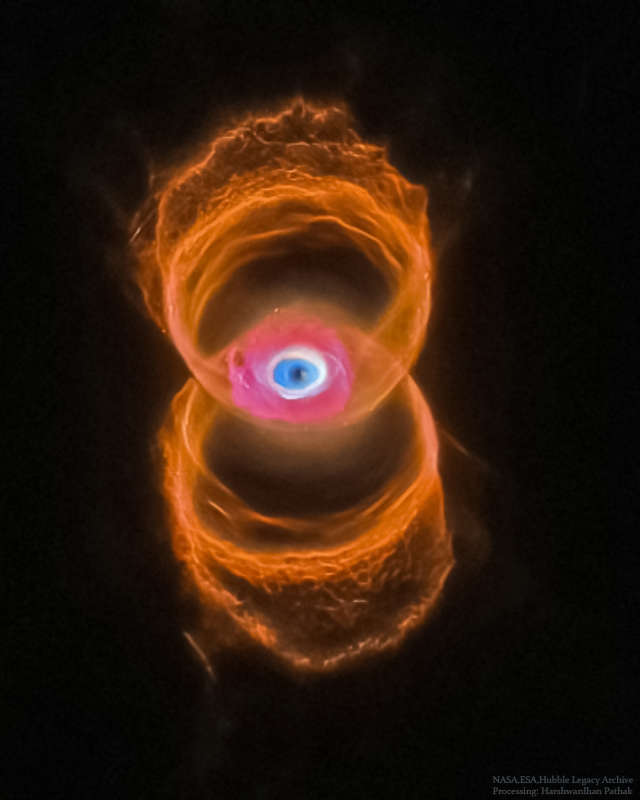
|
APOD: 2023 October 3 Á MyCn 18: The Engraved Hourglass Planetary Nebula

Explanation:
Do you see the hourglass shape -- or does it see you?
If you can picture it, the rings of
MyCn 18 trace the outline of an hourglass -- although one with an unusual eye
in its center.
Either way, the sands of time are running out for the central star
of this hourglass-shaped
planetary nebula.
With its nuclear fuel
exhausted, this brief, spectacular, closing phase of a
Sun-like star's life
occurs as its outer layers are ejected - its
core becoming a cooling, fading
white dwarf.
In 1995, astronomers used the
Hubble Space Telescope
(HST) to make a series of
images of planetary nebulae, including the one featured here.
Pictured, delicate rings of colorful glowing gas
(nitrogen-red,
hydrogen-green, and
oxygen-blue) outline the tenuous walls of the
hourglass.
The unprecedented sharpness of the Hubble images has revealed
surprising details of the nebula ejection process
that are helping to resolve
the outstanding mysteries
of the complex shapes and symmetries of planetary nebulas like MyCn 18.
| << Yesterday | 3.10.2023 | Tomorrow >> |

|
January February March April May June July August September October November December |
| |||||||||||||||||||||||||||||||||||||||||||||||||||||||
NASA Web Site Statements, Warnings, and Disclaimers
NASA Official: Jay Norris. Specific rights apply.
A service of: LHEA at NASA / GSFC
& Michigan Tech. U.
Based on Astronomy Picture
Of the Day
Publications with keywords: planetary nebula
Publications with words: planetary nebula
See also:
- APOD: 2025 August 31 Á NGC 7027: The Pillow Planetary Nebula
- APOD: 2025 August 22 Á A Tale of Two Nebulae
- APOD: 2025 August 5 Á NGC 6072: A Complex Planetary Nebula from Webb
- APOD: 2025 July 29 Á A Helix Nebula Deep Field
- APOD: 2025 July 13 Á Planetary Nebula Mz3: The Ant Nebula
- APOD: 2025 June 9 Á Between Scylla and Charybdis: A Double Cosmic Discovery
- APOD: 2025 May 14 Á NGC 1360: The Robins Egg Nebula